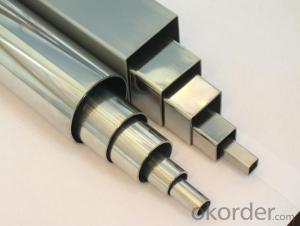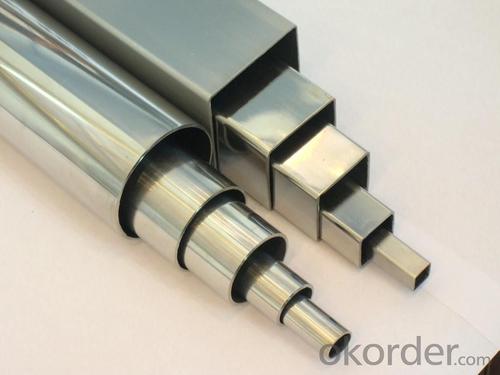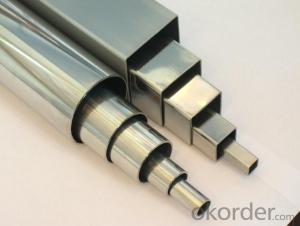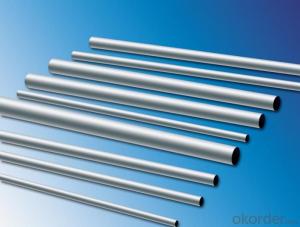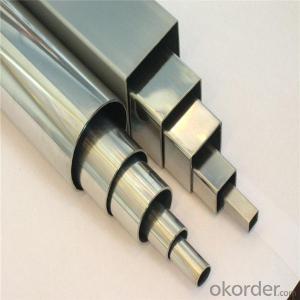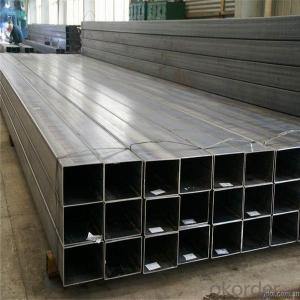Welded/seamless wall thickness 316 stainless steel pipe specs
- Loading Port:
- Shanghai
- Payment Terms:
- TT OR LC
- Min Order Qty:
- 4 m.t.
- Supply Capability:
- 5000 m.t./month
OKorder Service Pledge
OKorder Financial Service
You Might Also Like
Specification
Welded/seamless wall thickness
316 stainless steel pipe specs
Product Description
Product infomation
stainless steel pipe /tube | |
standard | ASTMA554,A249,A269and A270,A312 |
surface | 180G,320G,400G satin /hairline,400G,500G mirror finish |
material grade | 201,202,304,304l,316,316L,309s,310s,316ti,321,904L |
thickness | 0.5mm-50mm |
outer diameter | 10-600mm |
length | 5.8m,6m ,or as customer required |
application | decoration ,construction ,kitchen ,etc |
packaging | plastic wrapper and wooden packaging or as your requirement |
delivery time | 10days after received the deposit of T/T or L/C |
note | we can produce other standard as the customers'requirement |
Chemical composition
----316 stainless steel pipe specs
Stainless Steel pipe/tube grade | |||||||
Grade | Chemical composition | ||||||
C≤ | Si≤ | Mn≤ | P≤ | S≤ | Ni | Cr | |
201 | 0.15 | 1.00 | 5.5-7.5 | 0.5 | 0.03 | 3.50-5.50 | 16.00-18.00 |
202 | 0.15 | 1.00 | 7.5-10.0 | 0.5 | 0.03 | 4.00-6.00 | 17.00-19.00 |
304 | 0.08 | 1.00 | 2.00 | 0.045 | 0.03 | 8.00-11.00 | 18.00-20.00 |
304L | 0.03 | 1.00 | 2.00 | 0.045 | 0.03 | 8.00-12.00 | 18.00-20.00 |
309 | 0.2 | 1.00 | 2.00 | 0.04 | 0.03 | 12.00-15.00 | 22.00-24.00 |
309S | 0.08 | 1.00 | 2.00 | 0.045 | 0.03 | 12.00-15.00 | 22.00-24.00 |
310 | 0.25 | 1.50 | 2.00 | 0.04 | 0.03 | 19.00-22.00 | 24.00-26.00 |
310S | 0.08 | 1.00 | 2.00 | 0.045 | 0.03 | 19.00-22.00 | 24.00-26.00 |
316 | 0.08 | 1.00 | 2.00 | 0.045 | 0.03 | 10.00-14.00 | 16.00-18.00 |
316L | 0.03 | 1.00 | 2.00 | 0.045 | 0.03 | 10.00-14.00 | 16.00-18.00 |
316Ti | 0.08 | 1.00 | 2.00 | 0.045 | 0.03 | 10.00-14.00 | 16.00-18.00 |
2205 | 0.03 | 1.00 | 2.00 | 0.03 | 0.02 | 4.50-6.50 | 22.00-23.00 |
410 | 0.15 | 1.00 | 1.00 | 0.04 | 0.03 | 0.6 | 11.50-13.50 |
430 | 0.12 | 0.12 | 1.00 | 0.04 | 0.03 | 0.6 | 16.00-18.00 |
Products photos--316 stainless steel pipe specs
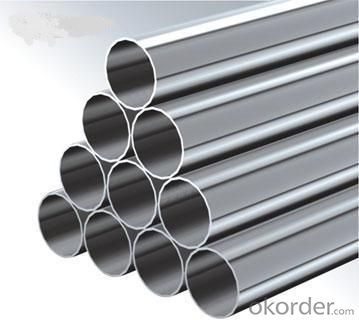
Welded stainless steel pipe/tube

Seamless stainless steel pipe/tube
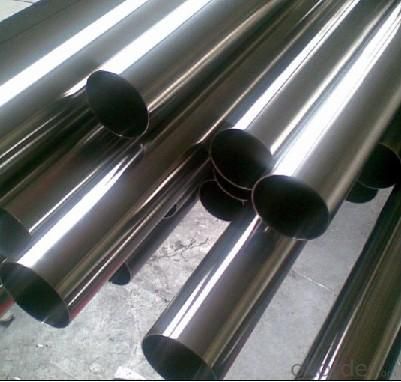
Packaging & Shipping
316 stainless steel pipe specs
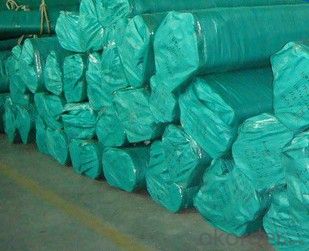
Application:
It is widely used in petroleum, electronics, chemical industry, medicine, textile, food, machinery, building, nuclear power, aerospace, military industry and other industries.
- Q: Can stainless steel pipes be used for HVAC systems?
- Yes, stainless steel pipes can be used for HVAC (Heating, Ventilation, and Air Conditioning) systems. Stainless steel is a widely used material in HVAC applications due to its durability, corrosion resistance, and high heat resistance. Stainless steel pipes are able to withstand high temperatures and pressures, making them suitable for both heating and cooling systems. Additionally, stainless steel pipes do not rust or corrode easily, which ensures a longer lifespan and minimal maintenance requirements for HVAC systems. The smooth interior surface of stainless steel pipes also allows for better airflow, which improves the efficiency of the HVAC system. Overall, stainless steel pipes are a reliable and efficient choice for HVAC installations.
- Q: Classification, advantages and disadvantages of stainless steel welding
- Metal gas shielded arc welding.It belongs to the gas protection welding, also is a kind of arc welding, that is, in the protection of gas, welding rod arc melting. Metal gas welding can be used in steel, non alloy steel, low-alloy steel and high alloy, etc. these materials are widely used. But one thing, its protective gas must be an active gas, such as carbon dioxide or a mixture of gases. The only drawback is that if the outdoor welding, then the workpiece can not be damp, otherwise it will affect the protection of gas protection effect.
- Q: Can stainless steel pipes be used for firefighting systems?
- Yes, stainless steel pipes can be used for firefighting systems. Stainless steel is a durable and corrosion-resistant material, making it suitable for various applications, including firefighting systems. Its resistance to heat, pressure, and chemicals makes it an ideal choice for transporting water, foam, or other fire suppression agents. Stainless steel pipes are also known for their high strength and ability to withstand extreme conditions, ensuring the reliability and longevity of the firefighting system. Additionally, stainless steel pipes have a smooth inner surface, minimizing friction loss and maximizing water flow, which is essential for effective firefighting operations. Overall, stainless steel pipes provide a safe and efficient solution for firefighting systems, offering reliable performance and durability in critical situations.
- Q: Can stainless steel pipes be insulated with polyvinylidene fluoride?
- Yes, stainless steel pipes can be insulated with polyvinylidene fluoride (PVDF). PVDF is a high-performance fluoropolymer that offers excellent thermal and chemical resistance properties, making it suitable for insulating stainless steel pipes in various industrial applications.
- Q: How do stainless steel pipes compare to copper pipes?
- Stainless steel pipes and copper pipes are both widely used in various applications, but they have distinct characteristics that set them apart. One of the main differences between stainless steel pipes and copper pipes is their resistance to corrosion. Stainless steel pipes have excellent corrosion resistance, making them suitable for environments with high humidity or exposure to chemicals. Copper pipes, on the other hand, are also corrosion-resistant but not to the same extent as stainless steel. They may corrode over time when exposed to certain chemicals or acidic conditions. Another factor to consider is cost. Copper pipes are generally more expensive than stainless steel pipes. However, copper is a highly efficient conductor of heat and electricity, making it a preferred choice for applications that require heat transfer, such as plumbing and HVAC systems. Stainless steel pipes are also good conductors but are generally less expensive than copper pipes, making them a cost-effective alternative in many cases. In terms of durability, stainless steel pipes are known for their strength and ability to withstand high pressures, making them suitable for industrial applications and underground installations. Copper pipes are also durable but may be more prone to damage in extreme conditions or when exposed to excessive pressure. Ease of installation is another factor to consider. Copper pipes are relatively easy to work with due to their malleability, which allows for easy bending and shaping. Stainless steel pipes, on the other hand, are typically harder and require specialized tools for cutting and bending. In summary, stainless steel pipes offer superior corrosion resistance, are cost-effective, and are ideal for high-pressure applications. Copper pipes, on the other hand, have excellent heat transfer properties and are more malleable, making them suitable for plumbing and HVAC systems. Ultimately, the choice between stainless steel and copper pipes depends on the specific requirements of the application and the budgetary constraints.
- Q: How do stainless steel pipes compare to carbon fiber pipes?
- Stainless steel pipes possess distinct qualities and find usage in diverse fields. Renowned for their robustness and power, they exhibit exceptional resistance to corrosion and can withstand elevated temperatures and pressures. Consequently, they prove suitable for various industries, including oil and gas, chemical, and construction. Boasting an elongated lifespan and the ability to bear heavy loads, stainless steel pipes emerge as a reliable option for numerous applications. Nevertheless, their relatively hefty weight necessitates additional support structures. Conversely, carbon fiber pipes, characterized by their lightness and high strength-to-weight ratio, serve as an alternative. Crafted from carbon fibers embedded in a resin matrix, they yield a formidable and rigid material. Aerospace, automotive, and sports equipment industries commonly employ carbon fiber pipes. Their lightweight nature permits enhanced fuel efficiency in vehicles and augmented performance in sports equipment. However, carbon fiber pipes prove pricier than their stainless steel counterparts and may lack the desired resilience to extreme temperatures or corrosive surroundings. To summarize, stainless steel pipes excel in durability and corrosion resistance, making them well-suited for demanding tasks. Carbon fiber pipes, on the other hand, offer lightweight construction and a commendable strength-to-weight ratio, rendering them ideal for weight reduction-focused applications. Ultimately, the choice between stainless steel and carbon fiber pipes hinges on specific requirements and the trade-offs between cost, weight, and performance.
- Q: Are stainless steel pipes suitable for food processing plants?
- Stainless steel pipes are an ideal choice for food processing plants due to their numerous advantageous properties. Firstly, their resistance to corrosion is crucial in an environment where food products undergo processing. The prevention of corrosion is essential to ensure the safety and integrity of the food being processed. Secondly, stainless steel pipes are easy to clean and maintain. Their smooth surface prevents the buildup of food particles and bacteria, making them hygienic and easily sanitizable. This is especially important in food processing plants where cleanliness and food safety are top priorities. In addition, stainless steel is a non-reactive material, meaning it does not release any harmful substances into the food being processed. This ensures that the quality and taste of the food remain unaffected by the piping material. Furthermore, stainless steel pipes possess excellent heat resistance, allowing them to withstand high temperatures without warping or distorting. This makes them suitable for various food processing operations that involve heat, such as pasteurization or sterilization. To summarize, stainless steel pipes are highly suitable for food processing plants due to their resistance to corrosion, ease of cleaning, non-reactivity, and heat resistance. They contribute significantly to maintaining the safety, hygiene, and quality standards required in the food industry.
- Q: Can stainless steel pipes be bent or shaped?
- Yes, stainless steel pipes can be bent or shaped using various methods such as cold bending, hot bending, and tube bending machines.
- Q: Can stainless steel pipes be coated with fusion bonded epoxy?
- Indeed, it is possible to apply fusion bonded epoxy (FBE) coating to stainless steel pipes. FBE, a thermosetting powder coating, is commonly utilized as a protective coating against corrosion for various pipe types, including carbon steel, ductile iron, and stainless steel. The FBE coating offers exceptional adhesion, corrosion resistance, and impact resistance to stainless steel pipes, thereby prolonging their lifespan and reducing maintenance demands. The FBE coating process entails the application of the powder coating onto the preheated pipe surface, which subsequently melts and forms a consistent, safeguarding layer. This coating is extensively employed in industries like oil and gas, water treatment, and sewage systems, serving as a defense mechanism against corrosion and other environmental factors for stainless steel pipes.
- Q: Are stainless steel pipes resistant to acidic solutions?
- Yes, stainless steel pipes are generally resistant to acidic solutions. The high levels of chromium in stainless steel create a passive layer that protects the metal from corrosion. This passive layer forms a barrier between the acidic solution and the underlying steel, preventing the acid from causing damage. However, the resistance of stainless steel pipes to acidic solutions can vary depending on the specific grade of stainless steel used. Some grades of stainless steel are more resistant to acids than others. It is important to consult the manufacturer or a corrosion specialist to determine the most suitable grade of stainless steel for a particular application involving acidic solutions.
Send your message to us
Welded/seamless wall thickness 316 stainless steel pipe specs
- Loading Port:
- Shanghai
- Payment Terms:
- TT OR LC
- Min Order Qty:
- 4 m.t.
- Supply Capability:
- 5000 m.t./month
OKorder Service Pledge
OKorder Financial Service
Similar products
Hot products
Hot Searches
Related keywords
